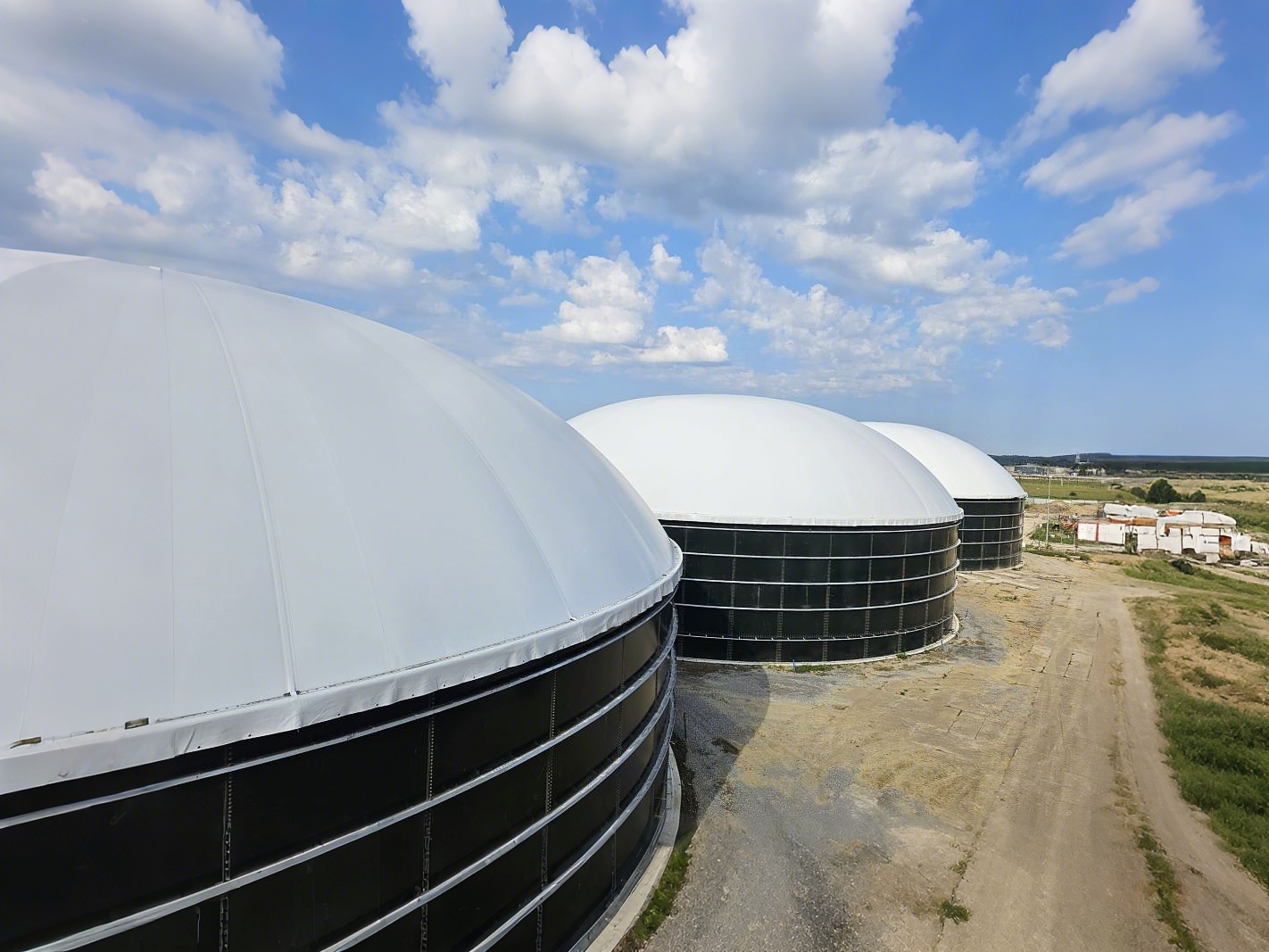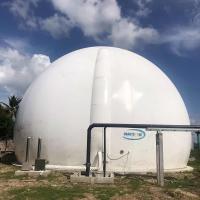Dual Membrane Biogas Balloons for Renewable Energy
Product Overview
Dual Membrane Biogas Balloons for Renewable Energy: A Flexible and
Cost-Effective Solution
Renewable energy solutions are evolving rapidly, and among the most
innovative technologies gaining traction is the biogas balloon.
Designed for efficient biogas storage and utilization, these
flexible digesters are transforming how farms, households, and
industries manage organic waste while generating clean energy.

What is a Biogas Balloon?
A biogas balloon (or flexible biogas digester) is a gas-tight,
inflatable membrane made from durable materials like reinforced PVC
coated fabric. It captures methane-rich biogas produced during
anaerobic digestion of organic waste (e.g., animal manure, crop
residues, or food scraps). Unlike fixed-dome or concrete digesters,
biogas balloons are portable, easy to install, and adaptable to
small or large-scale operations.

Why Biogas Balloons Outperform Traditional Systems
1. Cost-Effective Installation:
Traditional digesters require heavy construction and skilled labor.
Biogas balloons, however, can be set up in hours with minimal
groundwork.
2. Scalability:
Need more gas storage? Simply add another balloon or upgrade to a
larger size.
3. Durability:
High-quality materials resist UV rays, temperature fluctuations,
and punctures, ensuring a lifespan of 10–15 years.
4. Low Maintenance:
No complex parts to repair. Regular cleaning and leak checks are
the primary upkeep tasks.
Applications of Biogas Balloons
From rural households to industrial plants, biogas balloons serve
diverse needs:
- Farm Waste Management: Convert livestock manure into cooking fuel and fertilizer.
- Urban Organic Waste: Process food waste from restaurants or markets.
- Emergency Energy: Provide off-grid power in disaster-stricken areas.
Technical Advantages Over Traditional Systems
| Feature | Biogas Balloon | Steel Gas Holder |
|---|
| Installation Time | 3–5 days | 6–8 weeks |
| H₂S Resistance | Yes (no metal corrosion) | No (requires coating) |
| Pressure Management | Fully automatic | Manual valve adjustments |
| Lifespan | 20–25 years | 25–30 years |
| Cost per m³ Storage | USD20–USD30 | USD80–USD120 |
Table 1: Biogas balloon vs. steel gas holder for Renewable Energy.
How to Maximize Efficiency with Biogas Balloons
1. Optimal Feedstock Mix: Use a balanced ratio of carbon-rich (e.g., straw) and
nitrogen-rich (e.g., manure) waste.
2. Temperature Control: Maintain 25–40°C for peak microbial activity. Insulate the balloon
in colder climates.
3. Regular Monitoring: Check gas pressure and pH levels weekly.
FAQs About Biogas Balloons
Q1: Can biogas balloons handle acidic feedstock?
Yes, but pH levels should stay between 6.5 and 8. Add lime if the
mixture becomes too acidic.
Q2: How much biogas can a small household system produce?
A 10 m³ balloon can generate 1–2 m³ of biogas daily—enough for 3–4
hours of cooking.
Q3: Are biogas balloons safe?
Absolutely. Methane is safely contained, and pressure-release
valves prevent overinflation.
Q4: What happens to leftover slurry?
The nutrient-rich digestate is an excellent organic fertilizer for
crops.
The Future of Biogas Balloons
As governments push for net-zero goals, biogas balloons offer a
decentralized energy solution that reduces landfill waste, curbs
deforestation, and empowers communities. Innovations like
integrated IoT sensors for remote monitoring and hybrid
solar-biogas systems will further enhance their appeal.
Conclusion
Biogas balloons are not just a tool for renewable energy—they’re a
catalyst for sustainable development. By combining affordability,
flexibility, and environmental benefits, they democratize access to
clean energy while addressing global waste challenges. Whether
you’re a smallholder farmer or an eco-conscious entrepreneur,
adopting this technology can yield immediate economic and
ecological returns.
Product Show
















